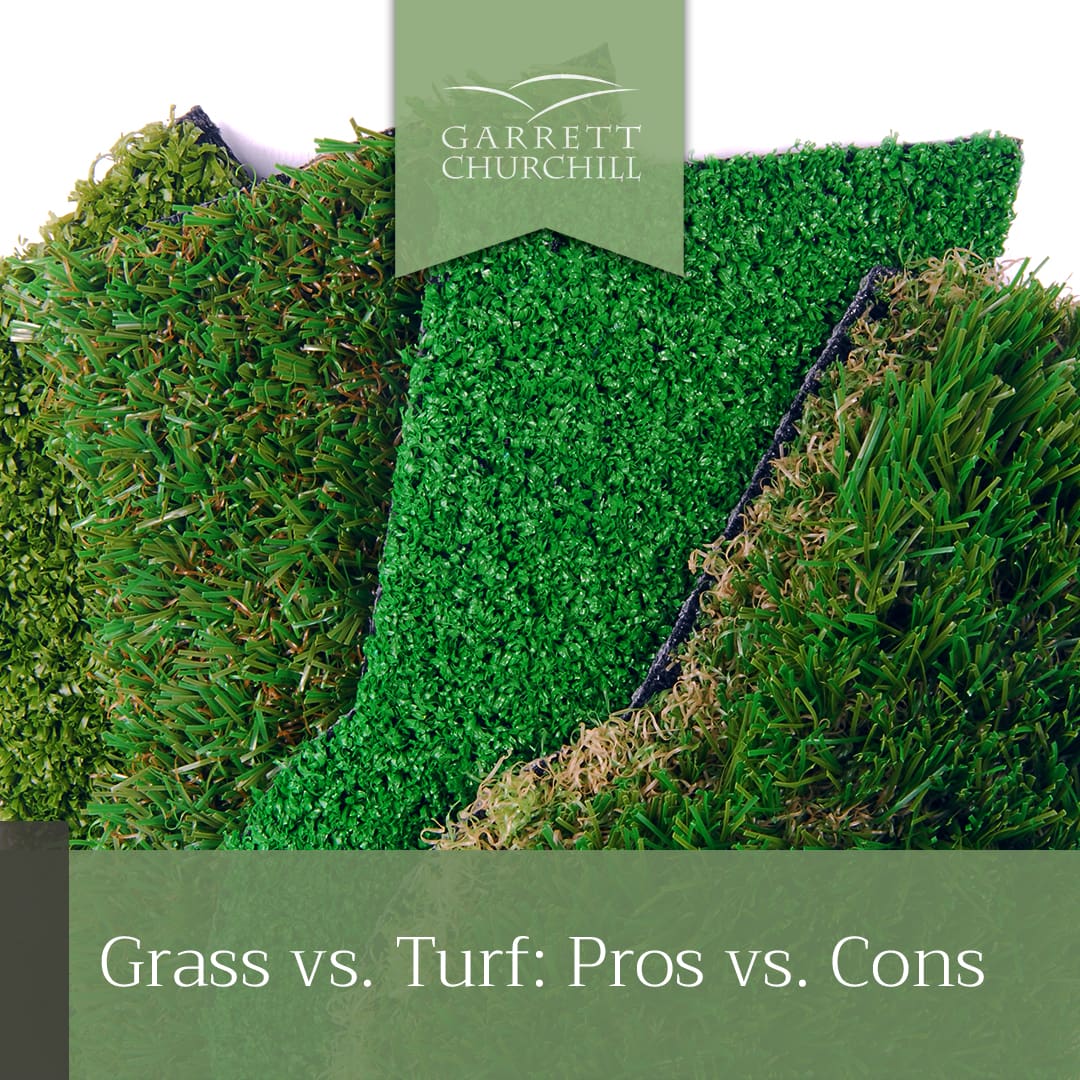Grass vs. Turf: Pros and Cons
As with any landscaping choice, the best decisions are made thoughtfully with your individual yard, budget, lifestyle, and aesthetic preferences in mind. When it comes to lawn softscape materials, you have the option to choose between grass or turf (artificial grass). As technology advances, turf looks and feels more real than ever—which may make that decision more nuanced than was in years past.
If you’re wondering whether the grass is greener with a traditional lawn or with artificial grass, keep reading for some pros and cons to take into consideration.
Cost
There’s no simple answer as to which option is more expensive overall. Initially, natural grass tends to be more economical; whether it’s already growing, or you need to plant seeds, the low cost of growing grass doesn’t compare to the initial installation expenses of turf.
However, grass requires more ongoing expenses to pay for maintenance equipment and supplies. Turf, on the other hand, tends to gradually pay for itself since there are minimal costs involved in maintenance.
Maintenance
In order to maintain its lush appearance, grass requires regular care including but not limited to watering, mowing, trimming, weeding, and fertilizing. Lawns can be pretty unforgiving, as evidenced by how quickly a lack of care or incorrect care becomes noticeable.
Turf, on the other hand, requires minimal upkeep. It isn’t completely hands-off, though—maintenance includes occasional rinsing to remove dust and odors, and brushing or raking to keep the artificial grass standing upright. Additionally, due to the lack of absorption, spills generally require more strenuous cleanup on turf.
Aesthetics
Turf is specifically designed to look like grass, so it’s safe to say the aesthetics are comparable. However, grass will have more natural variations over time throughout the seasons, weather changes, and natural wear and tear.
Turf, on the other hand, maintains its uniform height, color, and texture year-round, regardless of access to shade and sun.
It’s up to the individual to decide whether this is a pro or con. Do you prefer the consistently perfect appearance, or do you enjoy keeping up with the natural changes of your lawn?
Eco-Friendliness
With a traditional grass lawn, there’s no way to avoid using lots of water to maintain its quality. In addition to contributing to water waste, this can also contribute significantly to your water bill! Turf, on the other hand, does not require any water except for the occasional rinse.
That being said, a biodegradable grass lawn is a good option when considering the ecosystem—grass and soil provide food and space for living things such as other plants, earthworms, and endangered bees. Turf also has its benefits, though—with the minimal upkeep required, there are no pesticides, fertilizers, or chemical sprays to worry about. Plus, you won’t have any pests such as gophers living in your yard.
Additional Considerations
If you’re planning to use your lawn as a play space for pets or children, keep in mind that turf absorbs more heat than grass, and can get incredibly hot in the summer months. Not only can this be uncomfortable, it could also be potentially dangerous.
Turf doesn’t have soil, so you won’t have to worry about anyone tracking mud or dirt inside. This lack of soil also means that spills or pet urine aren’t naturally absorbed or broken down like they would be in a traditional lawn.
Ultimately, your choice of lawn is entirely up to you. If you would like a professional opinion, we would be happy to discuss your vision for your property. Contact us today for an on-site consultation to assess your landscaping needs!
